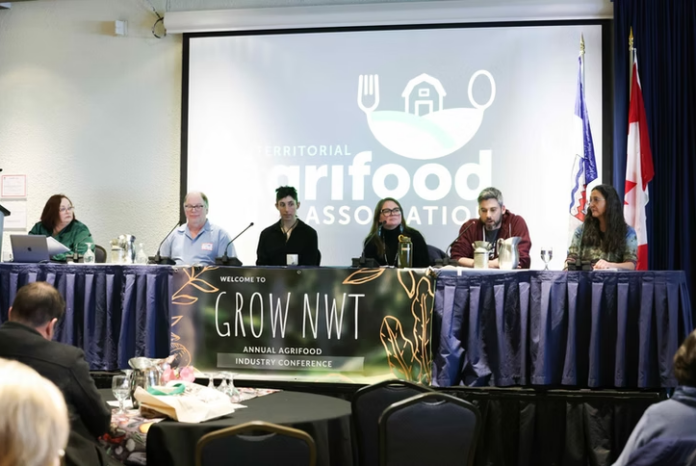Over the weekend, the Territorial Agrifood Association held a special conference with agricultural leaders from across the north to discuss recent developments and plans for the future.
The conference is known as “Grow NWT” and is designed to offer a forum to discuss some of the unique challenges and issues that are faced in the North regarding agriculture. Those in attendance are able to discuss these matters with northern based agrifood pioneers, as well as develop funding opportunities, and look into new possibilities with sector experts.
Janet Dean, the Executive Director of the TAA, spoke on some of the important ideas that were raised this year.
“The theme of this year’s conference was collaboration, so we had invited some of our partners from the Yukon to come over and share some of their stories about their responses to wildfires and how to get the land ready for agriculture again. It’s a lesson that we can apply here. We learned about different approaches to organic and regenerative farming from colleagues in Ontario. We tried to give a rounded perspective, but ultimately still showcase the voice of what’s actually happening here in the NWT right now in relation to food production.”
When asked about the impact of the recent wildfires on the NWT’s agriculture sector, Dean explained that while some data is still being collected, it was the South Slave region that has seen the most damage so far. However, many farms are getting back on track and new greenhouses are being built in many different areas to help in the reconstruction.
“The Town of Hay River received infrastructure money to support the rebirth of the agriculture sector. They’re developing a new strategy and there’s a lot of exciting things on the horizon.”
Dean also shared that the people at the TAA have been looking into what can be done to minimize the effect of the incoming tariffs from the United States.
“Food systems across Canada will be affected by what’s happening in the States, and we see it in distribution, we see it in resources, various inputs into food processing and manufacturing, ALL will be affected. For example, the cost of aluminum that is used to produce beer cans that will be used in producing local beer, that will be affected by the tariffs. We see the beef and chicken industries will be affected by tariffs.”
Dean explains that by improving the agricultural output of the North, it can help to reduce the impact of the tariffs and help people save money.





